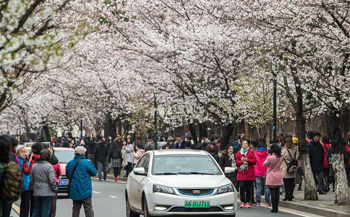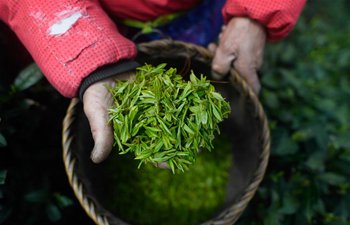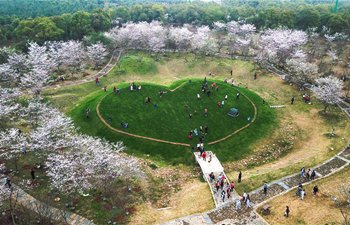ROME, March 21 (Xinhua) -- Increasing urban green areas and forests was crucial to ensure a future sustainable human development and to increase biodiversity, the UN's Food and Agriculture Organization (FAO) said on Wednesday.
The Rome-based UN agency launched its appeal on the International Day of Forests, which is celebrated worldwide on March 21 since 2012.
Marking the date with a special event at its headquarters in the Italian capital, FAO officials asked the international community to "join forces" to protect and increase urban trees and woodlands.
They highlighted forests within cities and in peri-urban areas play a key role not only in fighting air pollution and adapting to global warming, but "in the provision of a wide range of goods and services that are critical to human health and well-being".
"Well managed forests and trees in and around cities provide habitats, food and protection for many plants and animals, helping to maintain and increase biodiversity," FAO Director-General Jose Graziano da Silva stated in a video message.
Somehow, focusing environmental efforts on urban green was a necessity: today, over half of the global population lives in cities, and the figure was expected to reach almost 70 percent by 2050.
Moreover, "although cities occupy only 3 percent of the Earth's surface, they consume 78 percent of energy and emit 60 percent of carbon dioxide," FAO said in a statement.
As such, green areas and woodlands in and around cities would perform several vital functions, such as "storing carbon, removing air pollutants, assisting in food, energy and water security, restoring degraded soils, and preventing drought and floods".
Several cities were already fully engaged in boosting their urban green, and Beijing was among those praised by the UN's agency on Wednesday, and hailed for its "afforestation miracle".
Since 2012, in fact, the Chinese capital launched a massive plan of urban green development to counterbalance the rapid swell in population, infrastructures, and pollution occurred in latest decades. FAO called it "the largest afforestation program in its (Beijing's) history".
"In suburban and peri-urban areas, most lands were afforested after moving low-end industries," the agency highlighted. Thus, forests in and around the Chinese capital were increased by some 42 percent, and would now represent more than 25 percent of the city plain.
Other cases of excellence were mentioned in the publication "Forest and Sustainable Cities - Inspiring Stories from around the world" released by FAO on the International Day of Forests.
The report also hailed Kenya's capital Nairobi, for example, for the good results achieved by local communities in saving the Karura forest from decay and a property development plan.
Karura forest was "once a crime-ridden area" -- and its proximity to the city led local authorities to think about cutting the green areas in favor of housing ones, the report explained. Yet, when the local communities became involved in its management, "its fortunes turned around."
"Conservationists... launched a highly publicized campaign to save the forest," and the cooperation with various stakeholders -- including local authorities, private sector, residents, donors, and NGOs -- played a decisive role in improving the forest management, according to FAO.
A further positive example would be provided by Peru's capital, Lima, where an area of 14 hectares was designed to host a new park as part of an afforestation plan launched in 2015.
Aimed at protecting people and environment from natural disasters such as landslides and quakes, the plan allowed to plant 3,500 native trees, and install a drip irrigation system using treated wastewater.

















